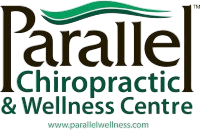Healthy Summer Practices
BY
More talk about healthy summer practices…What do you do to protect your skin from too much sun once you have spent 20 minutes without sunscreen to get Vitamin D? First look at what you should avoid in a sunscreen. it is important to avoid these unhealthy sunscreen ingredients – oxybenzone, octyl methoxycinnamate (OMC), parabens, phthalates, retinyl palmitate, and synthetic fragrance. Look for non-nano particle sized zinc or titanium based mineral ingredients. Look for protection against UVB and UVA rays and avoid spray sunscreens if you can. Make sure you have access to some shade if you are going to the beach so you can protect your skin and get out of the heat.
If you go overboard and get too much sun, aloe vera gel from the plant can soothe and heal your tissue if applied topically. Homeopathic remedies that you can try for sunburns include Cantharis, Urtica urens, or Belladonna depending on your unique picture of a sunburn. It is safe for you to use a 30c potency and dose five pellets 3- 6 x daily. For best results, see me for an individual consultation about your sunburn if you have one.
In terms of summer eats, cooking meats by frying, grilling, roasting or barbequeing can cause the formation of heterocyclic amines which are carcinogenic. Polycyclic aromatic hydrocarbons are formed when fat drips on a heat source causing excess smoke. Make sure you cut off the blackened parts of meats and any charred pieces of meat. People’s average risk of cancer goes from 1 in 500 to 1 in 50 if you are eating large amounts of muscle meat (pork, beef, fish, poultry) regularly and consistently. Marinating your meat before grilling or broiling, reduces heterocyclic amines by 90 percent. You could marinate your meat in red wine or dark beer for 6 hours or marinate in lemon juice or vinegar. Add fresh herbs or berries to increase antioxidants. Make sure you cut off fat before grilling. You can also cook meat partially before grilling; flip burgers more often or cook high quality meats rare or medium rare versus well done to make your summer barbecueing a bit healthier.
What about Hot Dogs? Look for uncured varieties that contain no nitrates. Choose varieties that say 100% beef or 100% chicken. Avoid those that contain MSG, artificial flavors/color, preservatives, high fructose corn syrup. Any type of processed meat that has been smoked, cured, salted or preserved with chemicals does increase risk of bowel cancer (hamburgers or sausages preserved with salt or chemical additives espescially nitrates). Do be mindful of your consumption of these products.
What about alcohol? The pros first- does contain antioxidants, increases HDL cholesterol. The cons- hard on your liver, causes weight gain, disrupts the gut microbiome and increases your risk of cancer with chronic consumption. Drink iced Rooibos tea. Rooibos has been shown to increase levels of glutathione in your liver which is your strongest antioxidant in your body. Drink iced green tea also for its antioxidant activity and anticancer qualities. It is important to eat foods that support liver function such as beets, artichokes, broccoli, apples, turmeric, dandelion greens, dandelion root tea (which can positively influence phase 2 liver eynzymes).
Milk thistle is a good supportive supplement for people that drink chronically. It has powerful antioxidant activity and helps protect your liver from damage by quenching free radicals. Take as directed on the label. Being mindful about all these things can create a healthier summer for you and your loved ones. Enjoy your summer!! For more specific help with your unique health, book a consultation with me at Parallel Wellness in downtown Calgary. Dr. Vinge 4032321283


